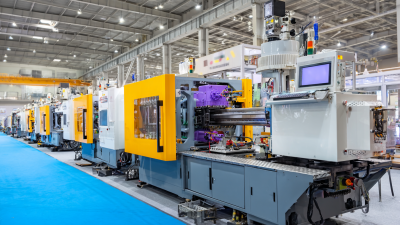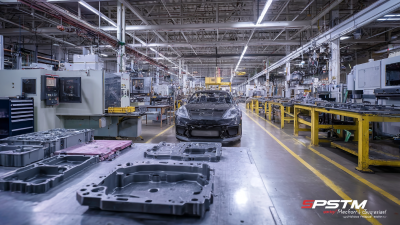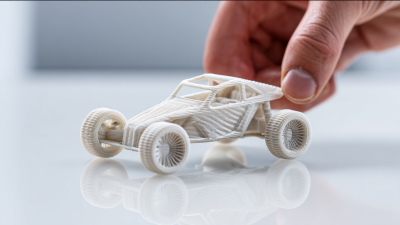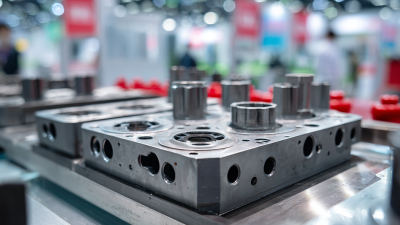In the ever-evolving landscape of automotive design, the integration of innovative manufacturing techniques is crucial to enhancing efficiency, reducing costs, and fostering creativity. Automotive Injection Molding has emerged as a pivotal technology, revolutionizing the way parts and components are produced for vehicles. This technique allows for the rapid and precise fabrication of complex shapes, enabling automotive designers to push the boundaries of their creativity while simultaneously meeting the demands of performance and safety. As the industry pivots towards sustainability, Automotive Injection Molding not only offers improved material utilization and reduced waste but also facilitates the use of recyclable materials in production. This introduction sets the stage for a deeper exploration of how Automotive Injection Molding is reshaping the future of automotive design, its benefits, challenges, and its potential to drive innovation in an increasingly competitive market.

Innovative injection molding techniques are revolutionizing the automotive component manufacturing landscape. According to a recent report by MarketsandMarkets, the global injection molding market is expected to reach $470 billion by 2027, growing at a CAGR of 3.5%. This increase is largely driven by advancements in material science and the growing demand for lightweight, durable components that can enhance fuel efficiency and performance. Techniques such as multi-material molding and over-molding are allowing manufacturers to create complex geometries and integrate multiple functions into single parts, significantly reducing assembly time and costs.
As the automotive industry shifts toward electric and hybrid vehicles, the role of injection molding continues to expand. For instance, methodical integration of advanced polymers and composites has led to components that not only meet stringent safety standards but also contribute to overall vehicle weight reduction. A study by the Society of Automotive Engineers indicates that optimized parts produced through injection molding can reduce the weight of a vehicle by as much as 30%, improving the driving range of electric vehicles.
Tip: To take full advantage of injection molding technology, automotive manufacturers should invest in R&D for high-performance materials that can withstand challenging conditions while maintaining design flexibility.
Tip: Collaborating with suppliers that specialize in advanced mold design can lead to innovative solutions that streamline production processes and enhance product performance.
The automotive industry is witnessing a significant shift towards sustainable materials in injection molding technology, which plays a crucial role in shaping future vehicle designs. According to industry forecasts, the global injection molding market is projected to grow from USD 365.22 billion in 2024 to USD 580.44 billion by 2033, showcasing a robust CAGR of 4.74%. This growth is largely attributed to the increasing demand for lightweight and durable materials that reduce vehicle weight and improve fuel efficiency.

Emerging trends reveal a growing preference for sustainable materials, such as bio-based plastics and recycled polymers, which align with environmental regulations and consumer demand for eco-friendly products. For instance, the specialty polymers market is expected to reach USD 179.48 billion by 2035, indicating a 6.75% CAGR, driven by innovations in material science that enhance the properties of injection-molded components. As manufacturers embrace these trends, the incorporation of sustainable materials not only supports compliance with environmental standards but also paves the way for more efficient production processes and cost savings in the long term.
Injection molding technology is revolutionizing the automotive industry by significantly reducing both production costs and time-to-market. By employing this efficient manufacturing process, automotive designers can quickly produce complex parts with high precision, which allows for faster prototyping and iteration. This accelerated pace not only minimizes the time needed for product development but also reduces material waste, contributing to overall cost savings.
Tips for leveraging injection molding include designing parts with manufacturability in mind. Simplifying designs by minimizing complex features can enhance the efficiency of the injection molding process. Additionally, collaborating closely with engineers during the design phase ensures that considerations such as part shrinkage and cooling times are effectively managed, further optimizing production.
Moreover, investing in advanced injection molding technologies can provide a competitive edge. Utilizing techniques like rapid tooling and multi-cavity molds will enhance production capability and efficiency, allowing manufacturers to scale up production quickly in response to market demand. This strategic approach not only improves turnaround times but also positions companies to meet the evolving needs of the automotive market seamlessly.
The automotive industry has witnessed remarkable transformations, largely driven by advanced technologies such as injection molding. One notable case study is the implementation of injection molding in the production of intricate dashboard components. Manufacturers have leveraged multi-material injection molding to create lightweight and aesthetically appealing parts that enhance the overall driver experience. This technology allows for the integration of various textures and colors without the need for additional painting processes, resulting in significant cost savings and reduced production timelines.

Another compelling example is the use of injection molding in the design of exterior automotive panels. By utilizing advanced molding techniques, companies have been able to produce complex shapes that improve aerodynamics and fuel efficiency. One major car manufacturer successfully launched a vehicle with injection-molded bumpers, which provided enhanced durability and reduced weight compared to traditional metal parts. This innovation not only strengthened the vehicle's safety features but also contributed to a decrease in material waste during production. Such successes underline the critical role that injection molding plays in advancing automotive design, showcasing its potential to unlock future possibilities in the industry.
The automotive industry is on the cusp of a significant transformation, particularly in the realm of injection molding technology. As vehicles become increasingly complex, integrating smart technologies into injection molding processes will be paramount. According to a recent report by MarketsandMarkets, the smart manufacturing market—which includes advanced injection molding technologies—is projected to grow from $236 billion in 2021 to $396 billion by 2026, reflecting a compound annual growth rate (CAGR) of 10.2%. This growth illustrates the industry's inevitable shift towards innovative manufacturing solutions that enhance efficiency and product quality.
Moreover, the integration of Internet of Things (IoT) capabilities into injection molding operations is set to revolutionize automotive design. Enhanced data analytics will enable manufacturers to monitor production processes in real-time, allowing for immediate adjustments that can reduce waste and improve precision. A report by Research and Markets highlights that the use of IoT in manufacturing could lead to a 15% boost in operational efficiency. By leveraging these smart technologies, automotive designers can not only meet the increasing demand for lightweight and durable materials but also pave the way for the development of smart components that enhance vehicle performance and safety.
| Technology Type | Current Application | Future Potential | Integration with Smart Tech | Advantages |
|---|---|---|---|---|
| Conventional Injection Molding | Dashboards, Panels | Complex geometries, lightweight components | Integration of sensors for real-time data collection | High efficiency, cost-effective mass production |
| 3D Injection Molding | Prototyping, small-run production | Customization of parts, rapid production | Smart components with embedded electronics | Flexibility in design, shorter time-to-market |
| Biodegradable Materials | Interior components, non-structural parts | Sustainability-focused designs | Smart recycling processes | Environmental impact reduction |
| Metal Injection Molding | Engine components, transmission parts | High strength, complex forms | Integrated IoT for maintenance alerts | Superior performance, design freedom |






